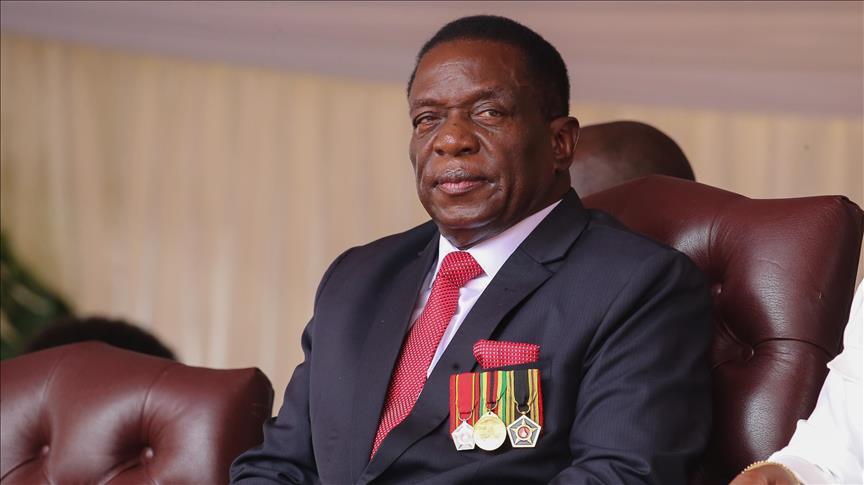Africa-Press – Zimbabwe. RECENTLY, President Emmerson Mnangagwa addressed nearly 100 000 people at Rusununguko Clinic grounds in Chiredzi and declared that “culture is the unshakable cornerstone of sustainable development”. This should not be just ceremonial rhetoric.
In a nation where annual inflation has surged to 92,1%, where youth drug abuse statistics paint a grim portrait, and where the banking sector staggers under the weight of cash hoarding, the turn towards cultural revival might appear counter-intuitive.
Yet, beneath the surface of traditional dances and ceremonial speeches lies a profound truth: Zimbabwe’s indigenous knowledge systems harbour sophisticated solutions to modern predicaments.
The President’s characterisation of Masvingo as the “cradle of Zimbabwean civilisation” serves as more than a historical acknowledgement. The architectural genius of Great Zimbabwe, built without mortar yet standing centuries later, demonstrates how indigenous innovation can surpass contemporary engineering. This same spirit of indigenous ingenuity could revolutionise modern challenges, from sustainable architecture to urban planning.
Across Africa, successful examples abound. Ethiopia’s traditional Gedeo agroforestry system, recently recognised by Unesco, has proven more resilient to climate change than modern monoculture farming. In Rwanda, the modernised Gacaca courts, rooted in traditional justice systems, helped to heal post-genocide wounds more effectively than international tribunals. Kenya’s M-Pesa success story drew inspiration from traditional rotating credit associations, transforming to a mobile banking revolution that lifted millions from financial exclusion.
“Let us teach our children and young people our cultural values and traditions,” urged Mnangagwa. This call gains particular urgency as Zimbabwe battles a youth drug abuse crisis. Traditional community structures like the dare (community court) and nhimbe (collective work gatherings) once provided robust social support systems that prevented youth delinquency. The First Lady’s Nhanga/Gota/Ixhiba initiative demonstrates how these ancient support structures can be revitalised for modern challenges.
Masvingo Provincial Affairs and Devolution minister Ezra Chadzamira’s reference to the Budula Festival illuminates another dimension: “These are more than just performances, they are our living history.” Indeed, cultural festivals across Africa have transformed into economic powerhouses. Nigeria’s Calabar Carnival generates millions in revenue while preserving cultural heritage. Zimbabwe’s potential in cultural tourism remains largely untapped, despite the creative industries’ significant GDP contribution confirmed by ZimStat and Unesco data.
The government’s pledge to establish cultural centres and film studios represents a step towards harnessing this potential. However, cultural revival must parallel infrastructural development. “Our culture remains our anchor,” noted Sport, Recreation, Arts and Culture minister Anselem Sanyatwe, but that anchor needs solid ground.
Traditional environmental management systems offer sophisticated solutions to climate change challenges. The Shangani people’s agricultural practices, celebrated during the cultural festival, demonstrate sustainable land use principles that modern conservationists are only beginning to appreciate. Similarly, traditional water harvesting techniques can complement modern drought mitigation strategies.
In addressing corruption, Zimbabwe could draw lessons from Botswana’s successful integration of traditional Kgotla meetings with modern governance, creating transparency and accountability. The principle of hunhu/ubuntu, properly institutionalised, could transform public service ethics more effectively than imported compliance frameworks.
The surge in gender-based violence and early marriages calls for solutions that blend traditional and modern approaches. Traditional women’s forums like Padare, when modernised, provide safe spaces for addressing gender issues. Rwanda’s abunzi mediators, rooted in traditional conflict resolution but addressing modern challenges, offer a replicable model.
“As we step onto the global stage, let us carry our Zimbabwean identity with dignity and confidence,” the President declared. This confidence must be built on practical applications of cultural wisdom. Innovation hubs in universities should research indigenous knowledge systems, not as historical curiosities but as springboards for technological advancement. Traditional healing practices, scientifically validated, could complement modern healthcare, especially in mental health and addiction treatment.
As drums echoed across Chiredzi’s landscape, they carried a message more profound than celebration. Zimbabwe’s path to solving contemporary challenges may not lie in the wholesale adoption of foreign models, but in the creative adaptation of indigenous wisdom to modern contexts. The nation that built Great Zimbabwe without modern technology surely possesses the intellectual resources to overcome current challenges.
The cultural renaissance called for is not about retreating into the past but about mining ancient wisdom for future solutions. In the words of a local elder at the commemoration, “Our ancestors didn’t just leave us monuments; they left us blueprints for survival.” As Zimbabwe faces its challenges, these blueprints may well light the way forward.
For More News And Analysis About Zimbabwe Follow Africa-Press






